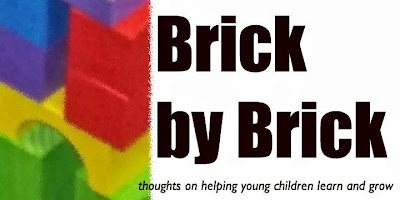Pages
▼
Tuesday, September 29, 2015
Noninterference
Sometimes the most successful learning in my classroom happens when I'm not anywhere around. (I may even need to delete sometimes from that sentence.)
Recently I added alphabet blocks to our center with the regular blocks. I had printed some words for kids to spell (if they chose). This boy went to the center and spelled his name. We talked about it. He built other structures with the blocks and didn't really use the alphabet blocks much.
I was involved in the other part of the room as he was building. I would go by and talk with him occasionally but I didn't stay in the center long or make any suggestions to him.
I wandered over after being involved in other activities for a while. I saw this structure. He explored how to use the cube blocks and created a really cool walled building.
I didn't see what led to this result. I didn't see any of the thinking or investigating. I didn't see any of the trial and error or the tumbled walls that preceded this.
Am I sorry? Yes. I would have enjoyed seeing what he did and how he did it. But I wonder if I would have interrupted the thinking. I wonder if I would have interjected suggestions or would have given subtle (or not so subtle) pushes to a certain end.
I've been working to be less of an influence in my classroom. To offer questions (or nothing at all) instead of suggestions. To observe rather than interfere.
I did miss a lot of what happened in the block center. But he didn't. All that thinking and investigating and trial and error are now in his brain. He can use those experiences to influence future thinking.
A big part of my job as a teacher is to create situations where learning can happen. That doesn't mean always talking or trying to make things happen. It does mean providing an atmosphere of investigation. It does mean offering different materials that can be used in lots of ways. It does mean getting out of the way so the learning can happen.
And it means missing some of the process so the learner can grow in his own ways.

